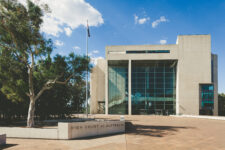Former High Court Justice Accused of Sexually Harassing Associates

The reputation of one of Australia’s pre-eminent legal minds has taken a battering after an independent inquiry by the High Court found he sexual harassed six female associates.
The women claim that Mr Heydon’s status as one of the most powerful men in the country protected him from being held to account for his actions, and did not come forward sooner for fear of not being believed and destroying their legal careers.
Too powerful to be held accountable
It’s a classic #MeToo situation of a powerful man using his position to behave inappropriately towards women.
Now retired, 77-year old Mr Heydon was on the High Court bench from 2003 until 2013. In 2014, Mr Heydon was appointed by then Prime Minister Tony Abbott to head the Royal Commission into Trade Union Governance and Corruption.
The High Court Inquiry
In 2019l, two of the former judge’s female associates notified Chief Justice Susan Kiefel that they had been sexually harassed by Mr Heydon, and a High Court Inquiry was set into motion.
As part of that inquiry, Vivienne Thom, the former Inspector-General of Intelligence and Security, interviewed a dozen witnesses, including five former associates. Her final report of those interviews detailed evidence that “demonstrates a tendency by Mr Heydon to engage in a pattern of conduct of sexual harassment” which included unwelcome touching, attempting to kiss the women and taking them into his bedroom.”
There have also been other allegations that he engaged in predatory behaviour regularly, and with women he did not directly work with, including from law students he came into contact with, and a female judge who says that he indecently assaulted her.
After finding him guilty, Chief Justice Kiefel personally apologised to the six women, five of them Mr Heydon’s associates, saying “their accounts of their experiences at the time have been believed”.
Mr Dyson firmly denies the allegations, and has issued a statement through his own legal representatives stating that: “if any conduct of his has caused offence, that result was inadvertent and unintended, and he apologises for any offence caused.”
But for the female victims of his behaviour the apology does not go far enough. One says she abandoned plans to become a barrister after she was sexually harassed by My Dyson, and another also left the profession because the ‘culture was broken from the top down.’
Victims say that Mr Dyson’s behaviour was an ‘open secret’ in judicial circles, but that most of the women he harassed knew that he was too powerful to complain about.
High levels of sexual harassment in the legal profession
Since a 2013 survey by Law Council of Australia revealed that one in four women have experienced sexual harassment in their legal workplace, the profession has been determined to make changes, including reducing male dominance in senior positions, providing more support for female lawyers and other members of the justice system, and instigating broad cultural change.
But change has been slow to come. In a 2017 global survey conducted by the International Bar Association (IBA) found that Australia has one of the highest rates of bullying and harassment amongst law professionals in the world.
Thirty percent of Australian respondents reported that they had been sexually harassed in the workplace, compared with 21.8 per cent in the United Kingdom and 32.6 percent in the United States. Women lawyers in Australia reported higher rates of harassment and bullying than their male peers, at 47 percent compared with 13 percent of men. The global average was 22 per cent.
What is sexual discrimination?
The Sex Discrimination Act 1984 (Cth) defines sexual harassment as when a person makes an unwelcome sexual advance, an unwelcome request for sexual favours, or engages in other unwelcome conduct of a sexual nature in relation to a person. This occurs in circumstances where it is possible that the person harassed would be offended, humiliated or intimidated. Sexual harassment can be subtle and implicit rather than explicit.
Sexual harassment can also include staring or leering, suggestive comments or jokes, displaying posters, magazines or screen savers of a sexual nature, stalking, sending sexually explicit emails or text messages, or unwelcome touching.
Some of these may have implications under criminal law, for example, sexual assault, indecent exposure, stalking or obscene communications.
Professional conduct in the legal profession
Furthermore, in relation to those working in the legal profession, the Australian Solicitors’ Conduct Rules and Legal Profession Uniform Conduct (Barristers’) Rules outline a common set of professional obligations and ethical principles solicitors and barristers are bound by when practising, including in relation to conduct which constitutes sexual harassment under the law.








